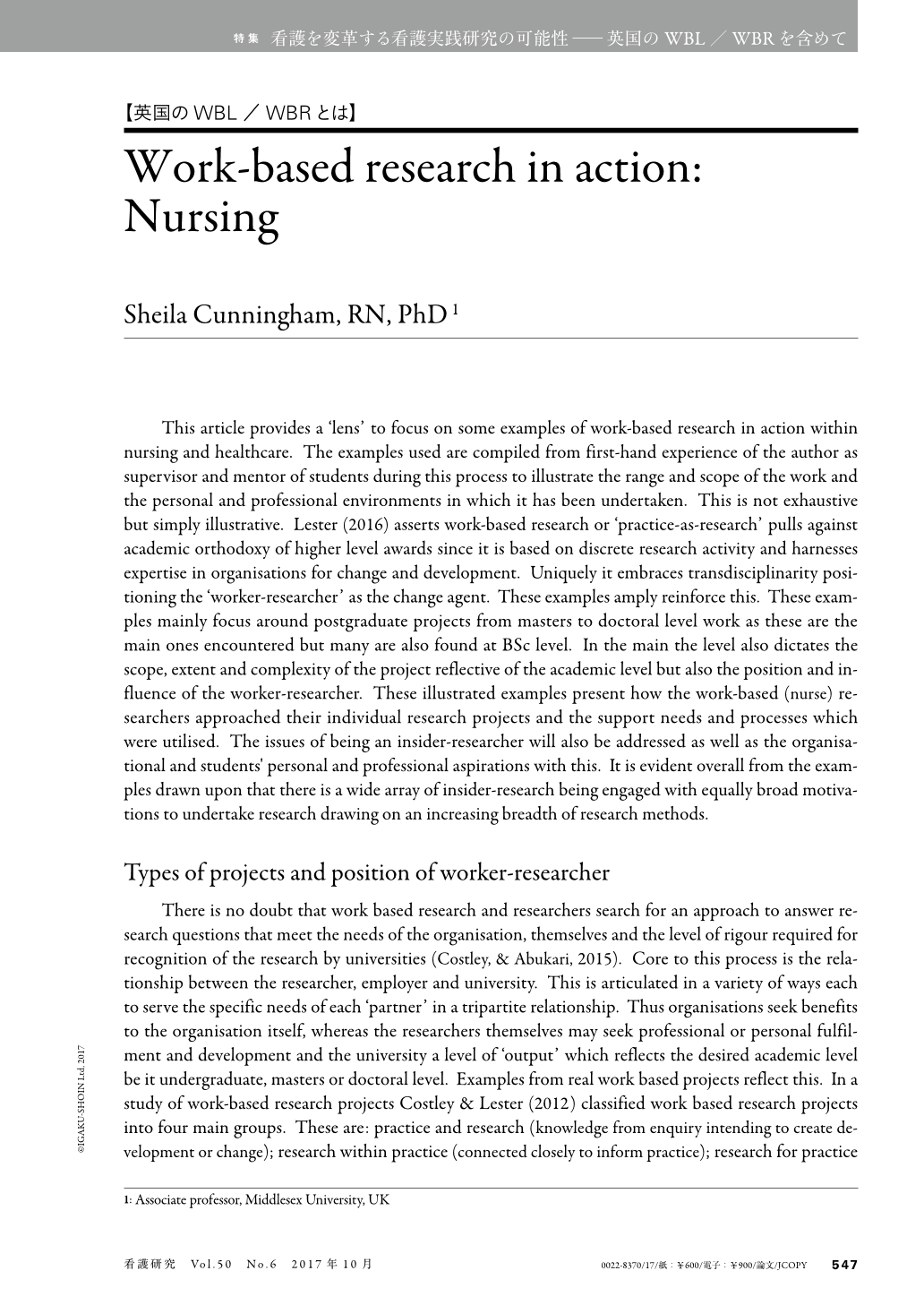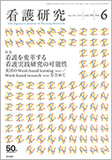Japanese
English
- 有料閲覧
- Abstract 文献概要
- 1ページ目 Look Inside
- 参考文献 Reference
This article provides a ‘lens’ to focus on some examples of work-based research in action within nursing and healthcare. The examples used are compiled from first-hand experience of the author as supervisor and mentor of students during this process to illustrate the range and scope of the work and the personal and professional environments in which it has been undertaken. This is not exhaustive but simply illustrative. Lester (2016) asserts work-based research or ‘practice-as-research’ pulls against academic orthodoxy of higher level awards since it is based on discrete research activity and harnesses expertise in organisations for change and development. Uniquely it embraces transdisciplinarity positioning the ‘worker-researcher’ as the change agent. These examples amply reinforce this. These examples mainly focus around postgraduate projects from masters to doctoral level work as these are the main ones encountered but many are also found at BSc level. In the main the level also dictates the scope, extent and complexity of the project reflective of the academic level but also the position and influence of the worker-researcher. These illustrated examples present how the work-based (nurse) researchers approached their individual research projects and the support needs and processes which were utilised. The issues of being an insider-researcher will also be addressed as well as the organisational and students' personal and professional aspirations with this. It is evident overall from the examples drawn upon that there is a wide array of insider-research being engaged with equally broad motivations to undertake research drawing on an increasing breadth of research methods.
This article provides a ‘lens’ to focus on some examples of work-based research in action within nursing and healthcare. The examples used are compiled from first-hand experience of the author as supervisor and mentor of students during this process to illustrate the range and scope of the work and the personal and professional environments in which it has been undertaken. This is not exhaustive but simply illustrative. Lester (2016) asserts work-based research or ‘practice-as-research’ pulls against academic orthodoxy of higher level awards since it is based on discrete research activity and harnesses expertise in organisations for change and development. Uniquely it embraces transdisciplinarity positioning the ‘worker-researcher’ as the change agent. These examples amply reinforce this. These examples mainly focus around postgraduate projects from masters to doctoral level work as these are the main ones encountered but many are also found at BSc level. In the main the level also dictates the scope, extent and complexity of the project reflective of the academic level but also the position and influence of the worker-researcher. These illustrated examples present how the work-based (nurse) researchers approached their individual research projects and the support needs and processes which were utilised. The issues of being an insider-researcher will also be addressed as well as the organisational and students' personal and professional aspirations with this. It is evident overall from the examples drawn upon that there is a wide array of insider-research being engaged with equally broad motivations to undertake research drawing on an increasing breadth of research methods.

Copyright © 2017, Igaku-Shoin Ltd. All rights reserved.


